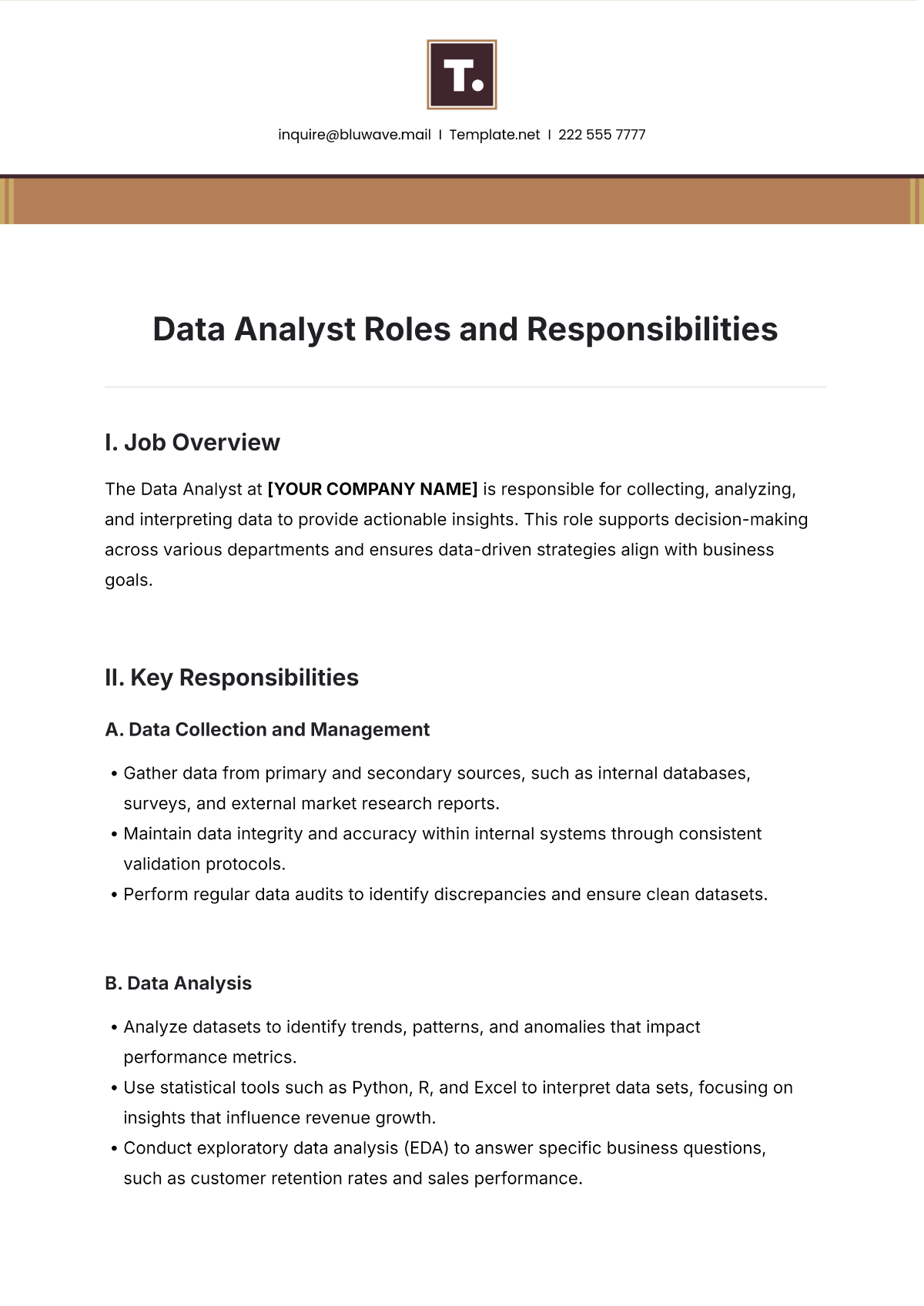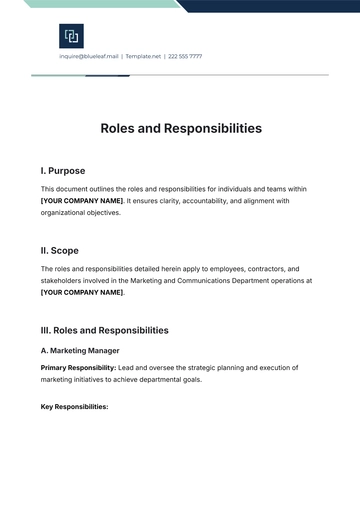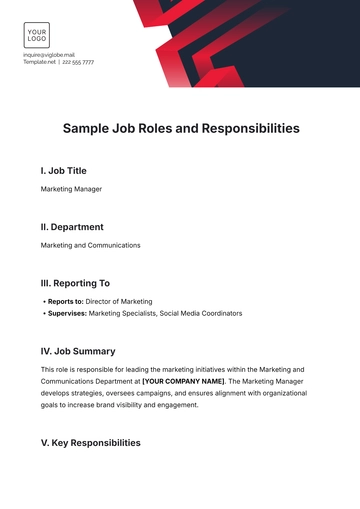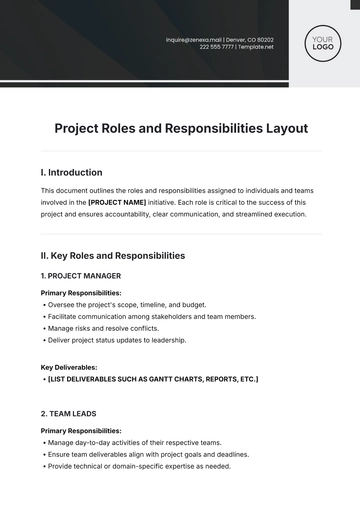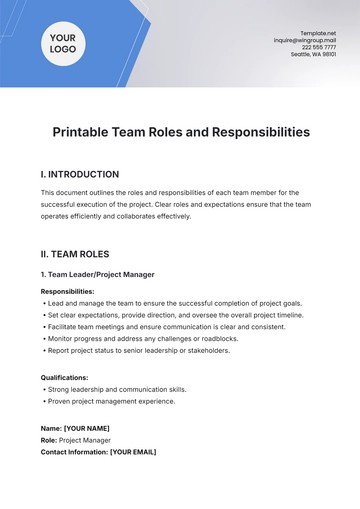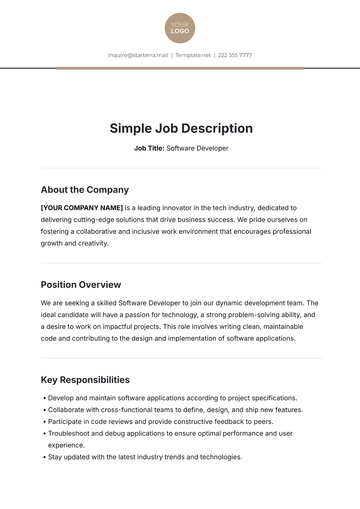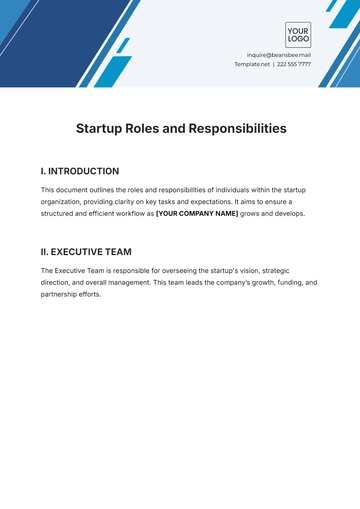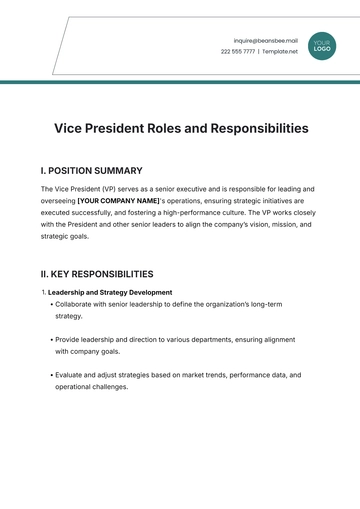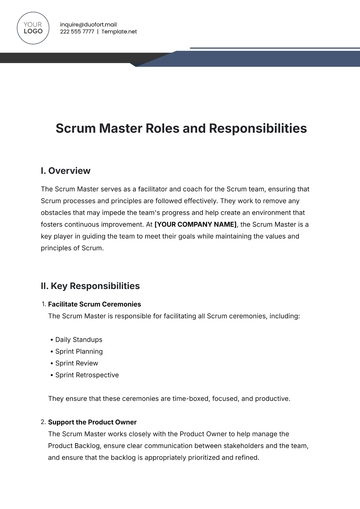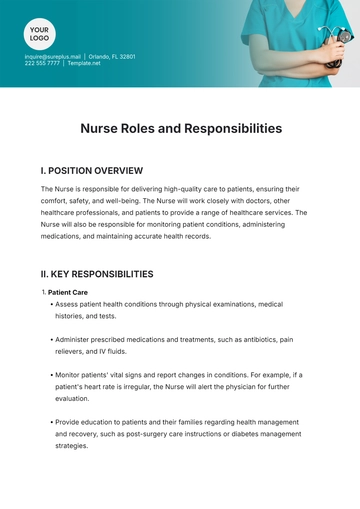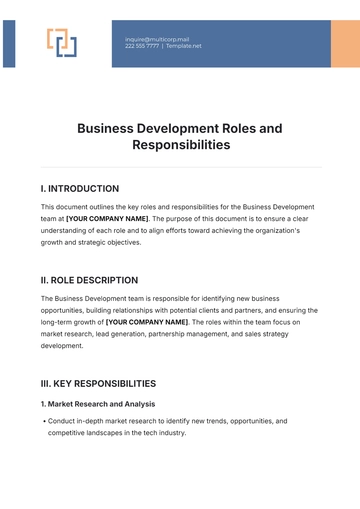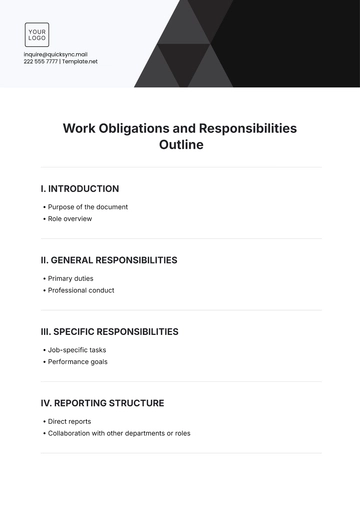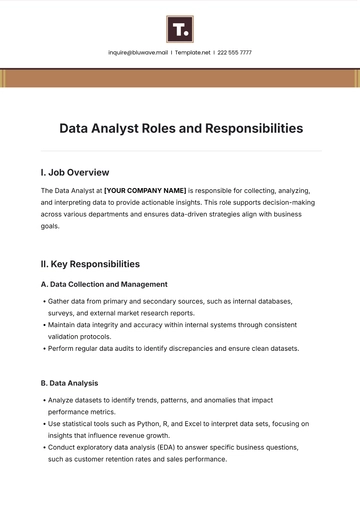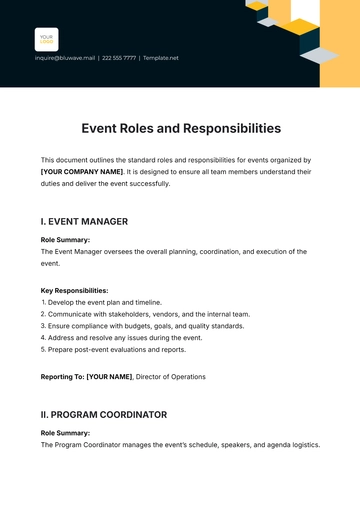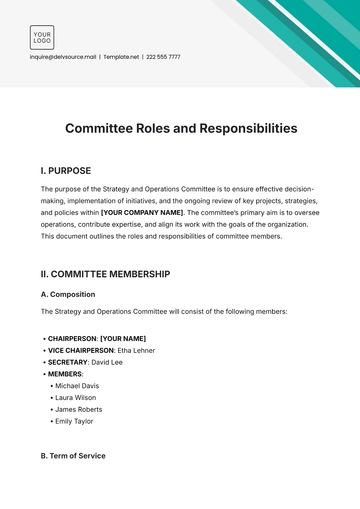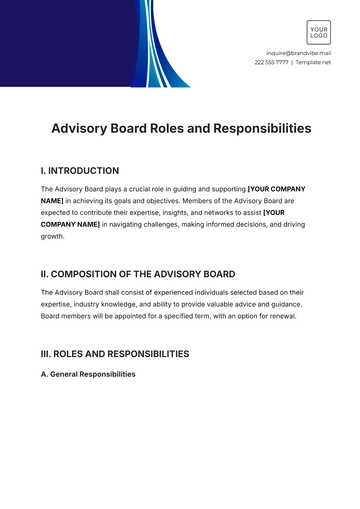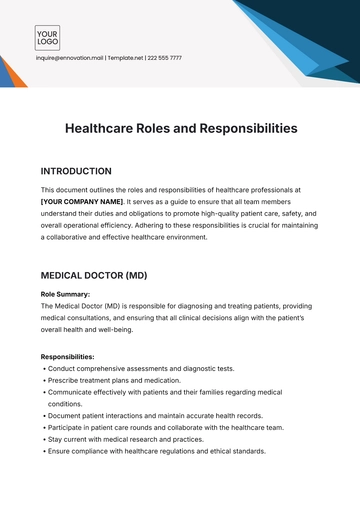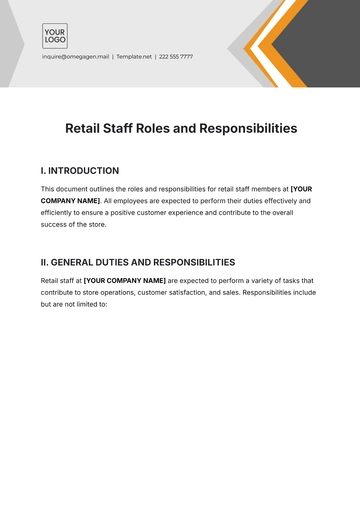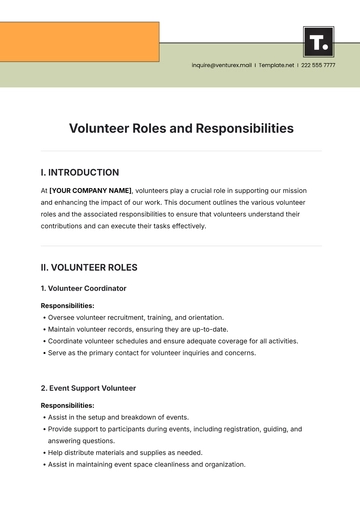Data Analyst Roles and Responsibilities
I. Job Overview
The Data Analyst at [YOUR COMPANY NAME] is responsible for collecting, analyzing, and interpreting data to provide actionable insights. This role supports decision-making across various departments and ensures data-driven strategies align with business goals.
II. Key Responsibilities
A. Data Collection and Management
Gather data from primary and secondary sources, such as internal databases, surveys, and external market research reports.
Maintain data integrity and accuracy within internal systems through consistent validation protocols.
Perform regular data audits to identify discrepancies and ensure clean datasets.
B. Data Analysis
Analyze datasets to identify trends, patterns, and anomalies that impact performance metrics.
Use statistical tools such as Python, R, and Excel to interpret data sets, focusing on insights that influence revenue growth.
Conduct exploratory data analysis (EDA) to answer specific business questions, such as customer retention rates and sales performance.
C. Reporting and Visualization
Create clear, concise reports using data visualization tools such as Tableau and Power BI.
Develop interactive dashboards showcasing KPIs such as revenue trends, customer segmentation, and market penetration.
Present findings to teams and stakeholders through visually engaging presentations and written reports.
D. Collaboration and Strategy
Collaborate with cross-functional teams, including Marketing, Sales, and Operations, to understand and address their data needs.
Provide actionable recommendations based on data analysis to improve customer acquisition strategies and optimize operational efficiency.
Partner with IT and engineering teams to enhance data pipeline automation and database performance.
E. Continuous Improvement
Stay updated with advancements in data analytics tools and techniques, including AI and machine learning.
Recommend process improvements based on recurring data trends and predictive models.
Ensure compliance with data privacy regulations such as GDPR and CCPA.
III. Required Qualifications
A. Education and Experience
Bachelor’s degree in Statistics, Data Science, Computer Science, or a related field.
3–5 years of experience in data analysis or a related role.
B. Technical Skills
Proficiency in programming languages like Python and SQL.
Strong experience with data visualization tools such as Tableau, Power BI, or QlikView.
Advanced knowledge of statistical methods, predictive modeling, and machine learning algorithms.
C. Soft Skills
Strong analytical thinking and problem-solving abilities.
Excellent written and verbal communication skills to translate technical findings for non-technical stakeholders.
Ability to prioritize tasks and manage multiple projects in a fast-paced environment.
IV. Reporting Structure
The Data Analyst will report directly to the Data Analytics Manager and work closely with departments such as Marketing, Operations, and IT.
V. Additional Information
Work Location: Remote with periodic meetings at [YOUR COMPANY NAME] located at [YOUR COMPANY ADDRESS].
Work Schedule: Full-time, Monday to Friday, 9:00 AM–5:00 PM EST.
Salary Range: $70,000–$90,000 per year, depending on experience.
This document reflects the essential functions and qualifications for the Data Analyst role at [YOUR COMPANY NAME]. It may be revised as business needs evolve. For additional inquiries, please contact [YOUR COMPANY EMAIL].
Roles and Responsibilities Templates @ Template.net
